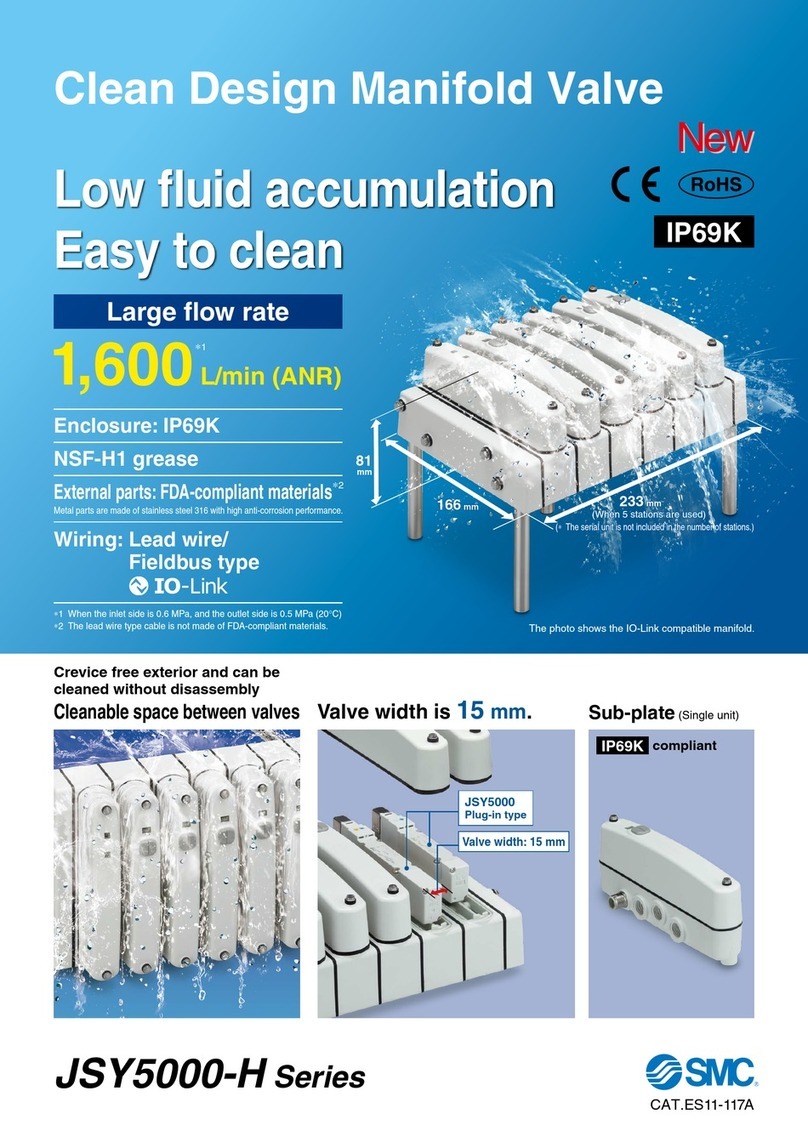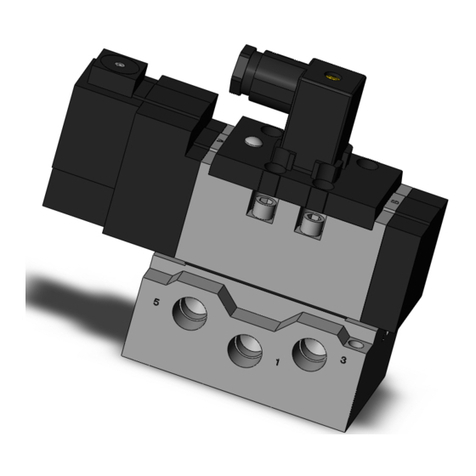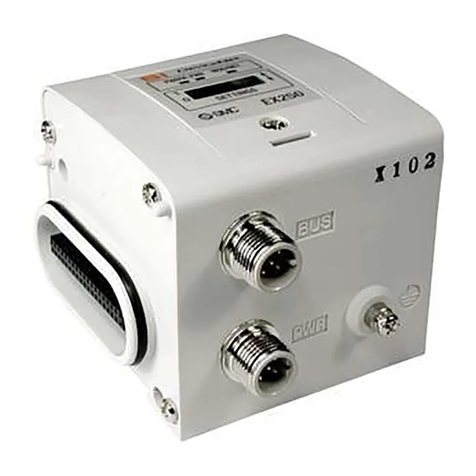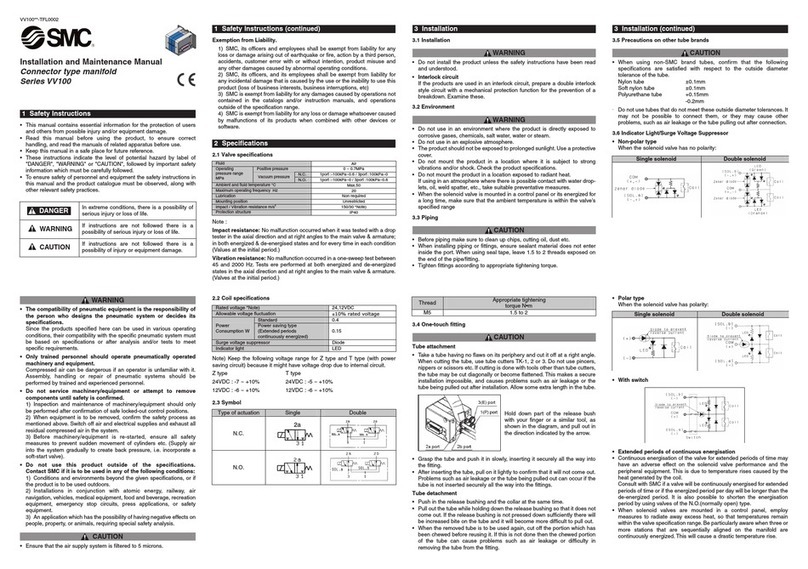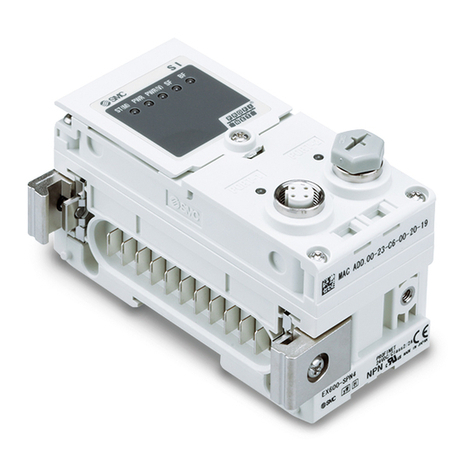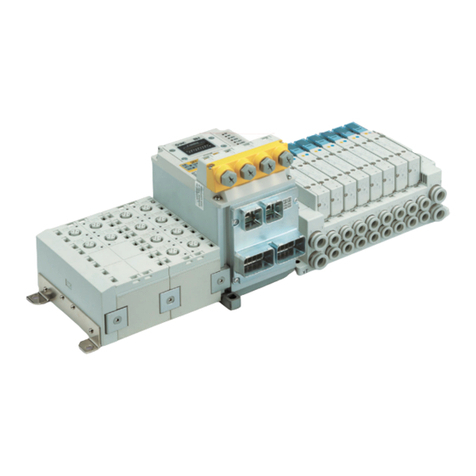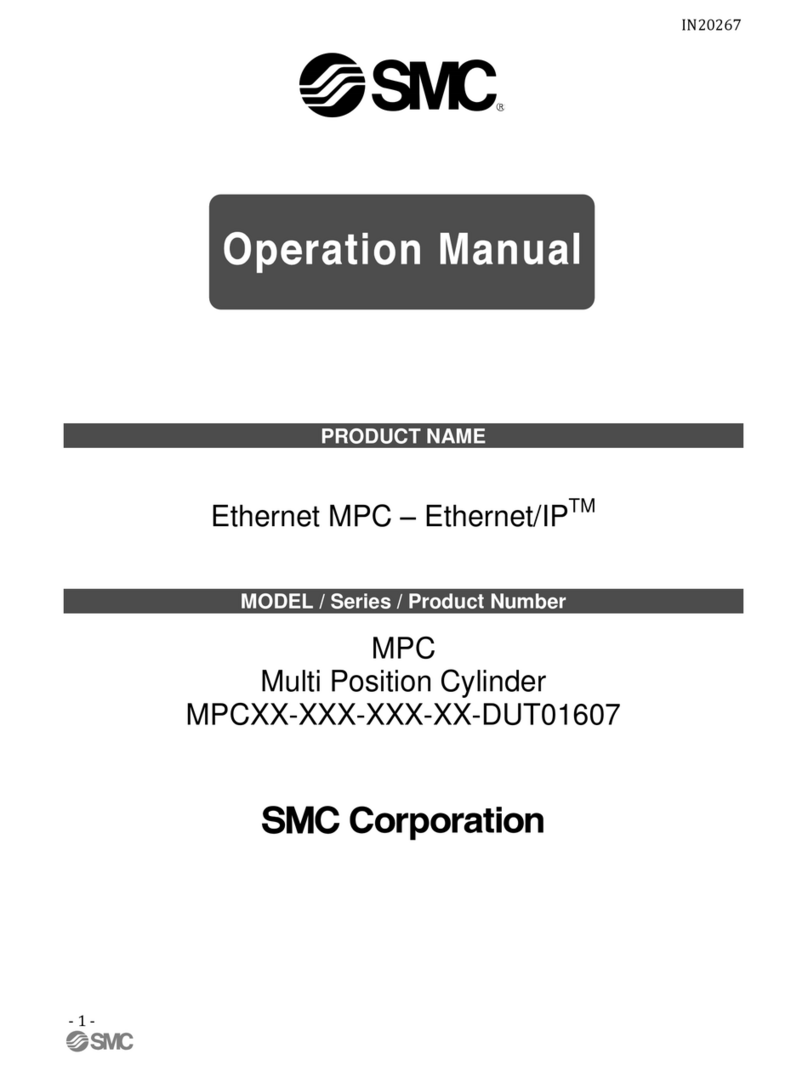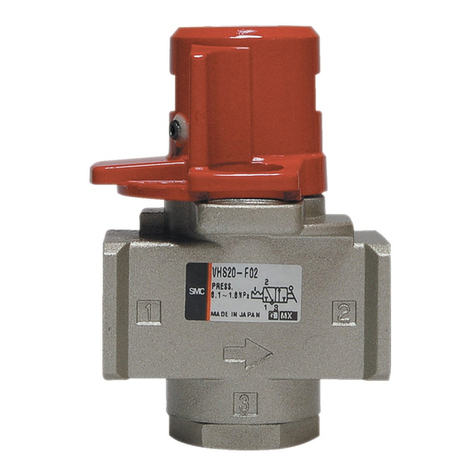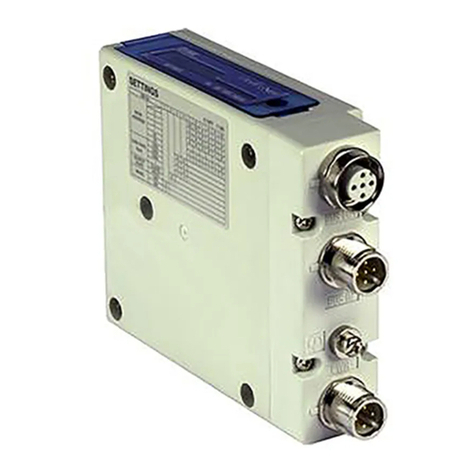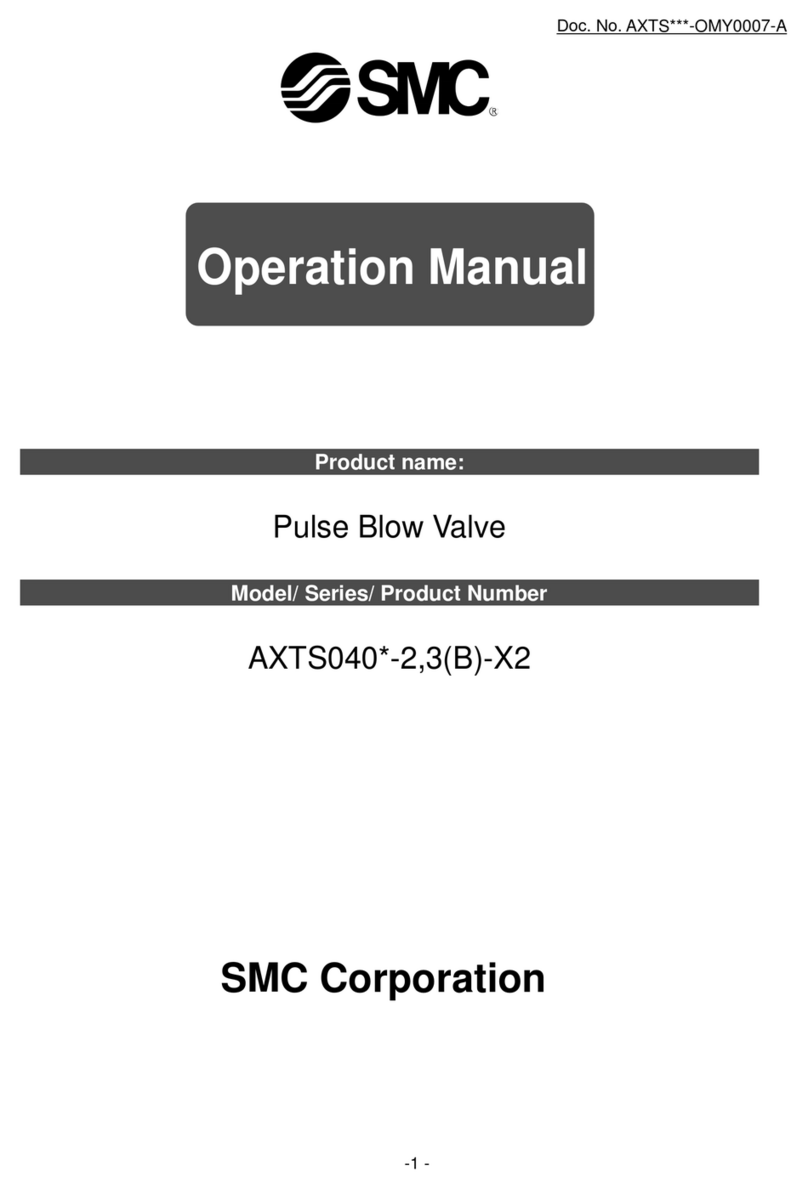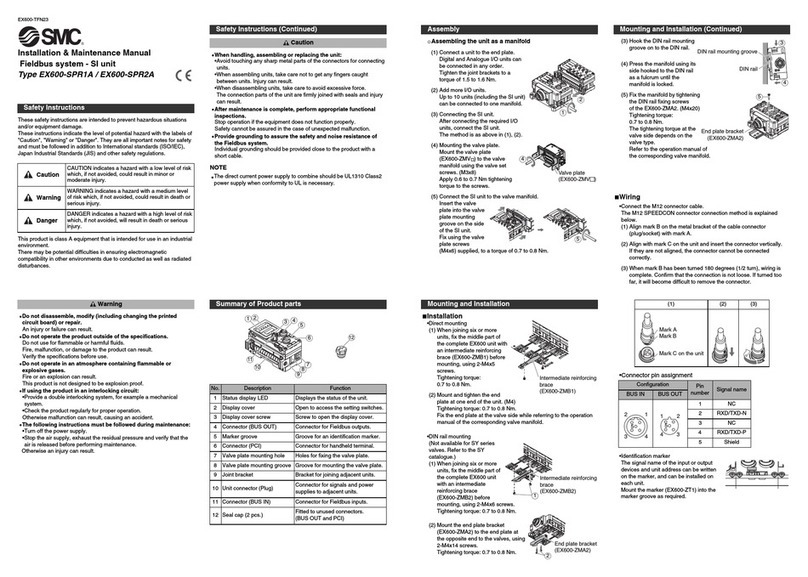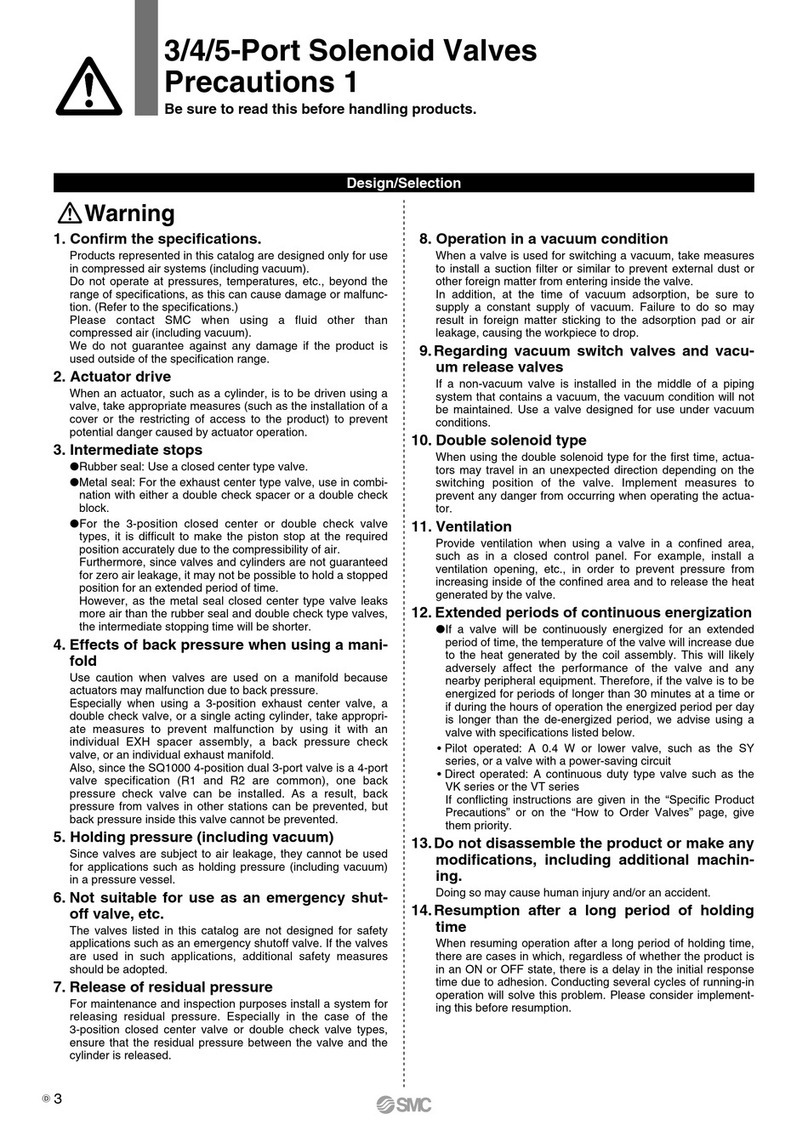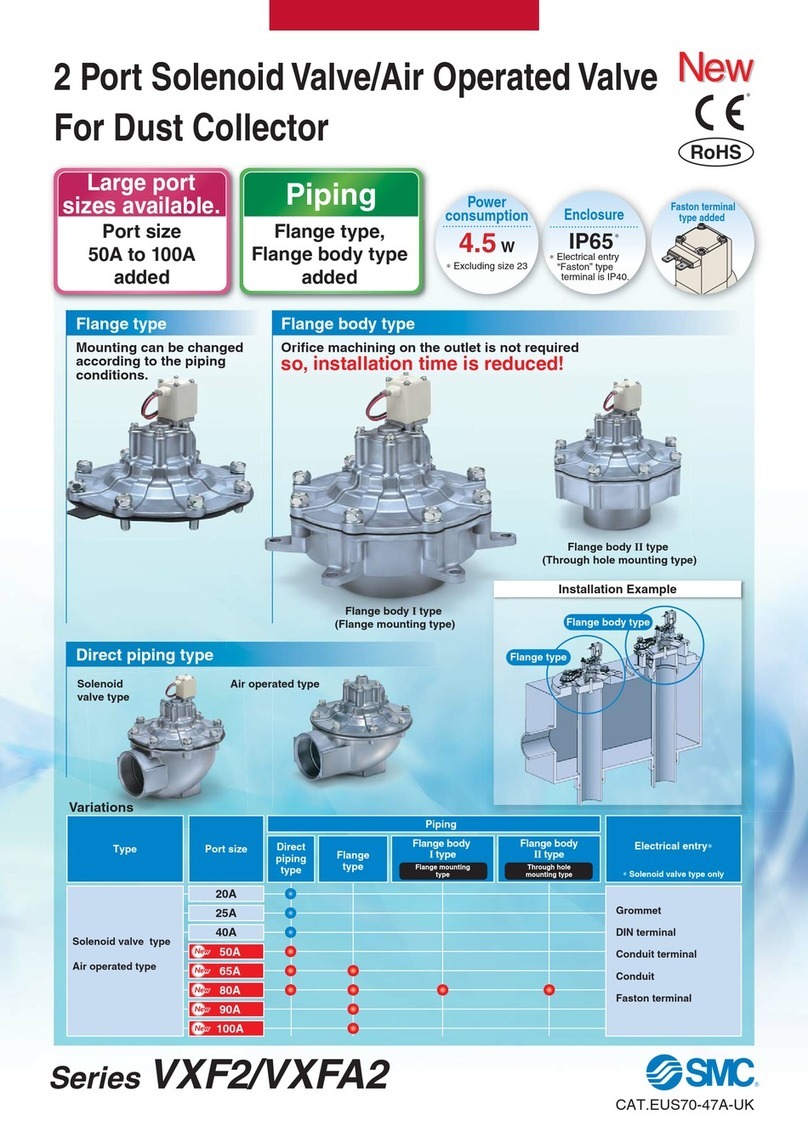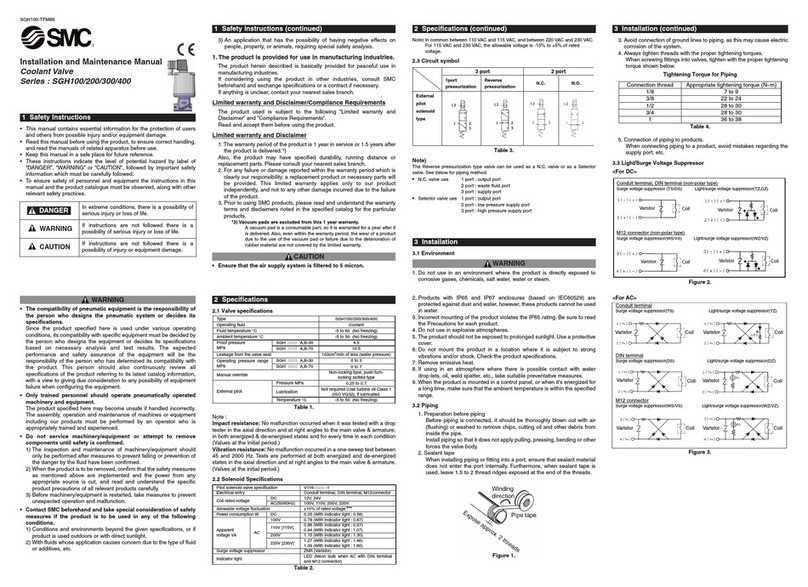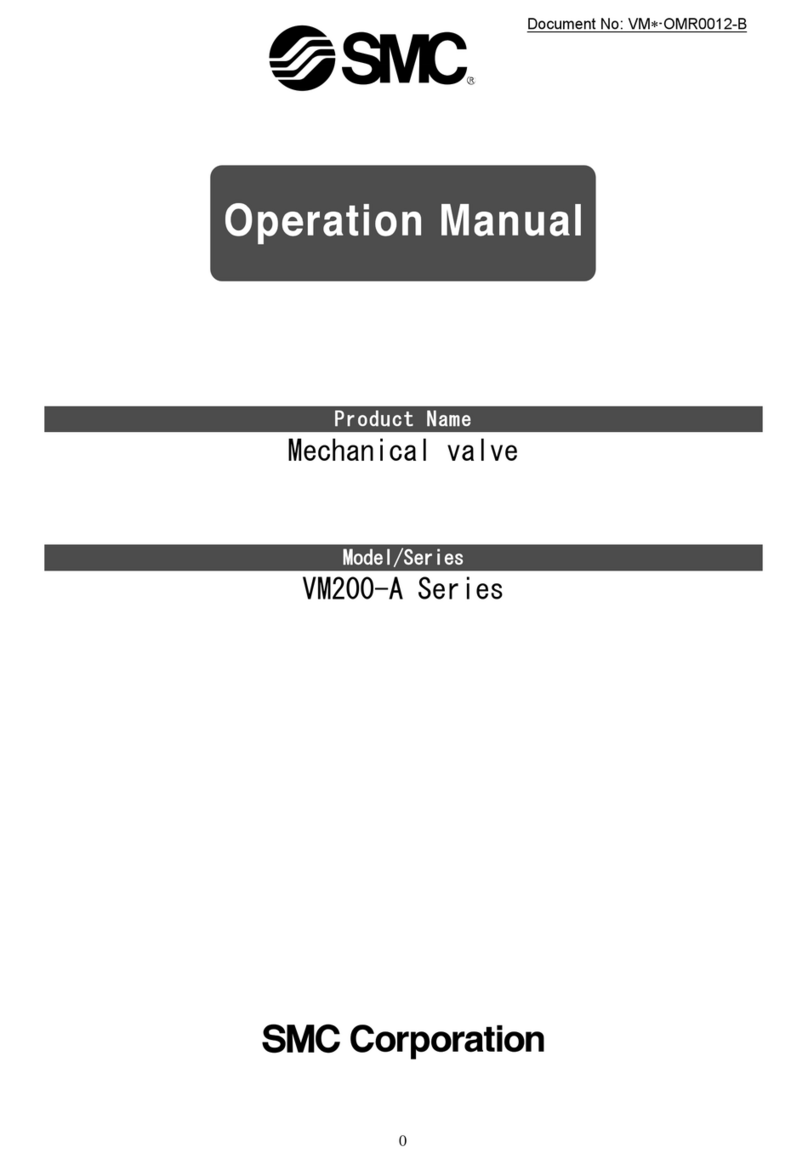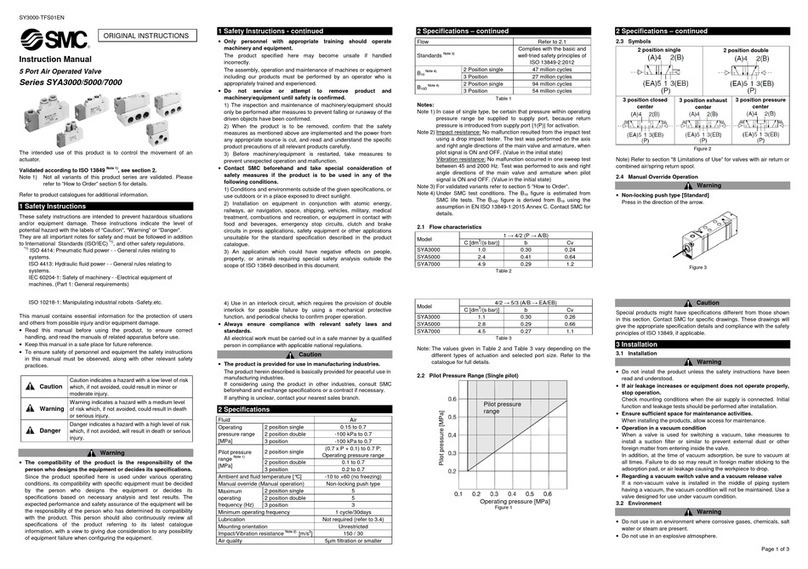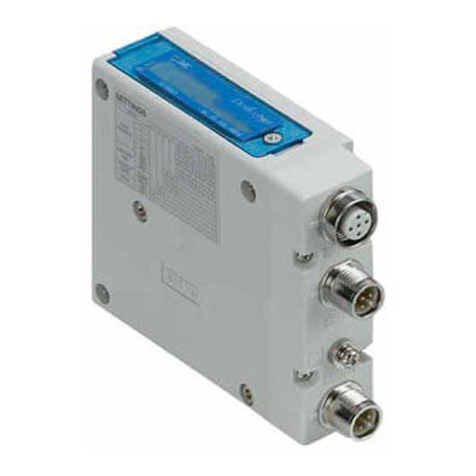
Instruction Manual
Model4101-28/5100-28 IRGas SensorModule (7/03) Page:
2.0 System Installation
2.1 Installation
2.1.1 Location of Sensors
There are no absolute rules for determining the quan-
tity and location of gas detection heads to protect any
particular facility. Locate the sensors carefully in all
areas where gas escape may be expected and where it
is desirable to detect the presence of unwanted gas.
Use redundancy where enhanced protection or reli-
ability is required. Light gases such as methane tend
to rise while heavy gases such as propane tend to ac-
cumulate in low areas. Seek advice from experts who
know the characteristics of the gas being detected, air
movementpatternsand the facility.Use commonsense
and refer to various publications that discuss general
guidelines for your industry. See Application Data
SheetADS-001 for further information.
2.1.2 Unpacking
The housing and terminal board are a single assembly
to which the sensor is wired. The control module is a
separateplug-in assembly.Since all modern electronic
equipment can be damaged by static electricity dis-
charge it is important to take precautions. Discharge
static electricity from your body by touching a
grounded metal object before handling the module.
To gain access to the field terminal block remove the
module carefully from the housing by grasping the
centre “pull” knob and pull straight away. Field wir-
ing is connected to the terminal strip located in the
base of the housing.
2
2.1.3 Mounting
The housing should be oriented so that the sensor is
on the under-side of the housing. Use a conduit seal
and conduit loop or trap on the field wiring side to
preventwater or condensation from entering the hous-
ing through the conduit or its threaded connection.
2.2 Wiring -- 4-20 mAversion
2.2.1 Wiring
We recommend using shielded cable. See table be-
low. Refer to applicable wiring codes when installing
andwiring the 4101-28.After the field wiring has been
carefully connected as per Fig 2.1. CHECK THAT
THE CORRECT WIRES ARE CONNECTED TO
THECORRESPONDINGTERMINALSANDTHAT
VOLTAGE LEVELS DO NOT EXCEED THE
SPECIFICATIONS. When the wiring and voltages
have been verified, gently plug-in the control module.
Use gentle hand pressure to align and seat the module
then use firm hand pressure to fully seat the module.
Wire Gauge Maximum Length
16 AWG 2,000 ft.
14 AWG 3,500 ft.
12 AWG 6,000 ft.
10 AWG 9,000 ft.
Recommended Wire / Cable Gauge
Table 1
2.2.2 Jumper Location for Non-Isolated /
Isolated Current Output
The 4101-28 is capable of providing an isolated cur-
rent output. A jumper must be moved to select be-
tween isolated, or non-isolated current output on the
terminal board.
The analog output is precisely controlled by the inter-
nal micro-processor and digital-to-analog converter.
The standard 4 to 20ma signal is proportional to gas
concentration of 0 to 100% LEL. Additional stepped
levels below 4mA provide various diagnostic signals.
2.2.3 Initial LED Status - 4-20 mA
Operation
With power applied, check that the green POWER
LED is ON and the FAULT/ CAL LED is showing a
slow red flash during the first 90 seconds which will
then change to a short green flash every 2 seconds
(confidence blip). During the first 90 seconds the ana-
logoutputwill be at 3.0mA and then change to4.0mA.
Ifafter the 90 secondswarm-up the current isat 2.5mA
orany value other than 4.0mAthen the sensor requires
calibration and the calibration procedure must be ini-
tiated. Observation of the LED status signals and out-
put current levels aid the operator when calibrating
the sensor/transmitter as described below under
CALIBRATION.
Themoduleincludes an alphanumeric displaythat pro-
videsavariety of English languagecommands scrolled
across the display to supplement the LED sequences
and aid the operator. Please refer to the following list
and see Table of Responses
